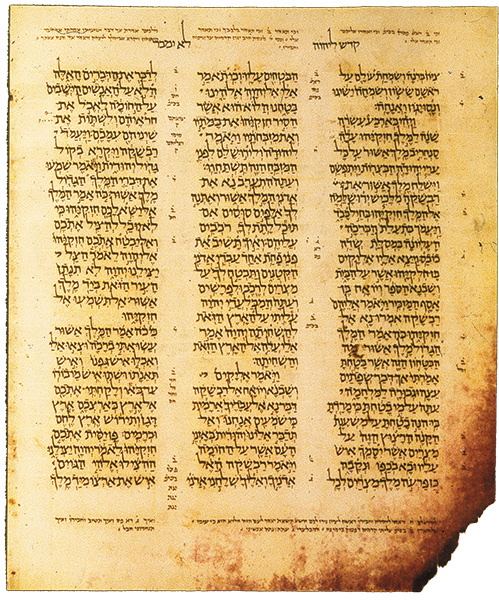

However, it is by no means a canonical authority over works like the Aleppo Codex, for example, reports The Associated Press. The extensive annotations make the Codex Sassoon a crucial source for scholars studying the Masorah and its development over time. The annotations include both traditional Masorah notes and a newer form of notes known as Masorah magna, which provides additional information on the text's structure and organization. The Codex Sassoon is particularly significant because it contains one of the most extensive Masoretic annotations of any known manuscript. ( Courtesy of Sotheby’s ) The Most Comprehensive Hebrew Canon? These notes are written in a variety of scripts and styles, making the study of the Masorah a challenging and specialized field.Ĭlose up of the Codex Sassoon showing the writing on vellum, a parchment made from animal skin. The Masorah contains various types of notes, such as marginal notes that indicate alternative readings, notes on the pronunciation of words, and notes on the structure and layout of the text. Their primary task was to preserve and transmit the oral traditions that had been handed down from generation to generation about the correct pronunciation, spelling, and punctuation of the Tanakh. Their work was essential in standardizing the text and vocalization of the Hebrew Bible, ensuring that it remained consistent across different communities and geographic regions. The Masoretes were a group of Jewish scholars who developed this system in the early Middle Ages, between the 6th and 11th centuries AD. The Masorah is a system of notes and symbols that were added to the text of the Hebrew Bible to ensure its accuracy and preserve its transmission over generations. One of the unique features of the Codex Sassoon is its Masoretic annotations. Masoretic Annotations and the Codex Sassoon What You Should Know About the Codex Gigas, aka the Devil’s Bible.Analysis Shows that the Hebrew Bible May Be Centuries Older than Once Thought.Constitution sold in 2021 for $43 million. Just how much this rare example is worth will be discovered in May, but the experts are hopeful that it could be a record-breaking document sale and exceed the current holder of the most expensive historical document sold, which is a 1787 copy of the U.S. The Codex Sassoon is currently mid-tour in Israel, having visited the UK, and going to the USA, where it will be auctioned in May. Only the Dead Sea Scrolls and a handful of fragmentary early medieval texts are older, and “an entire Hebrew Bible is relatively rare,” he said according to AP News.

“There are three ancient Hebrew Bibles from this period,” said Yosef Ofer, a professor of Bible studies at Israel’s Bar Ilan University: the Codex Sassoon and Aleppo Codex from the 10th century, and the Leningrad Codex, from the early 11th century.
#OLDEST HEBREW MANUSCRIPTS FOR FREE#
The Codex currently can be viewed for free at Tel Aviv’s Anu Museum, reports The Times of Israel, but will soon continue its tour, including Dallas, Los Angeles and will end up in New York where the auction will take place.

Its 24 books are divided into three parts: the Pentateuch, the Prophets, and the Writings. It is written on vellum, a parchment made from animal skin, and contains almost 800 pages. The codex contains the entire Hebrew Bible, known as the Tanakh, with the exception of some parts of the Book of Isaiah. The Codex Sassoon is a significant artifact not only for Jewish history but also for the study of ancient manuscripts. Experts are speculating that it will fetch anywhere between $30 and $50 million! The Codex Sassoon and Israel’s Historical Reclamation This is one of the oldest surviving biblical manuscripts, more specifically, it is a nearly 1,100-year-old version of the Hebrew Bible, which will be going up for auction in May. Renowned auction house, Sotheby’s in New York, prepares itself for the sale of possibly the most expensive historical document ever sold at an auction, in the form of Codex Sassoon.


 0 kommentar(er)
0 kommentar(er)
